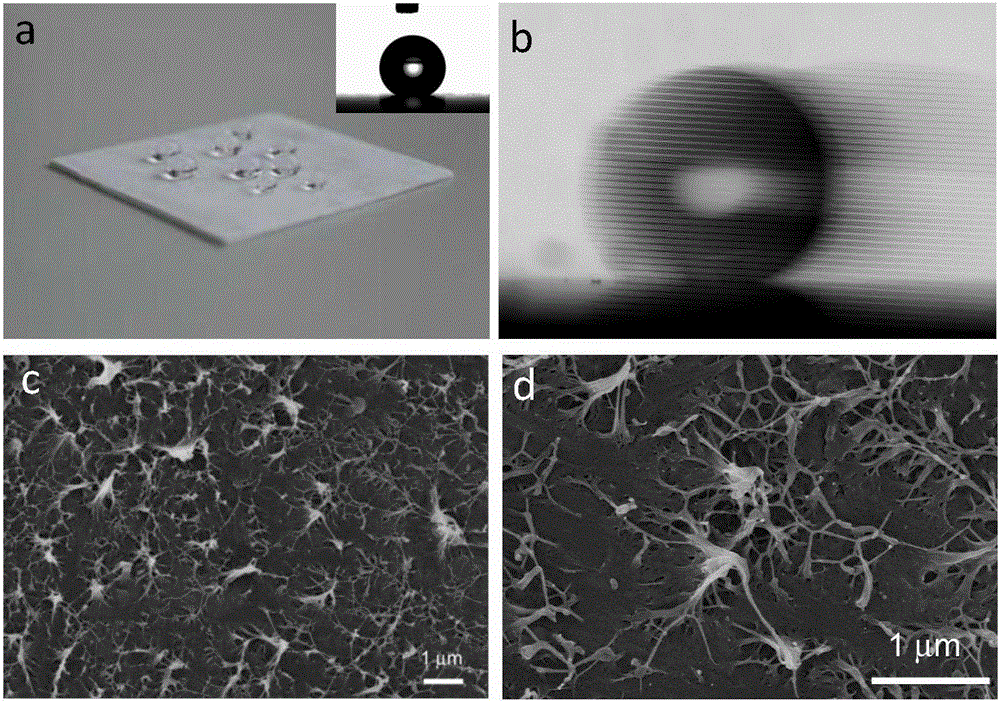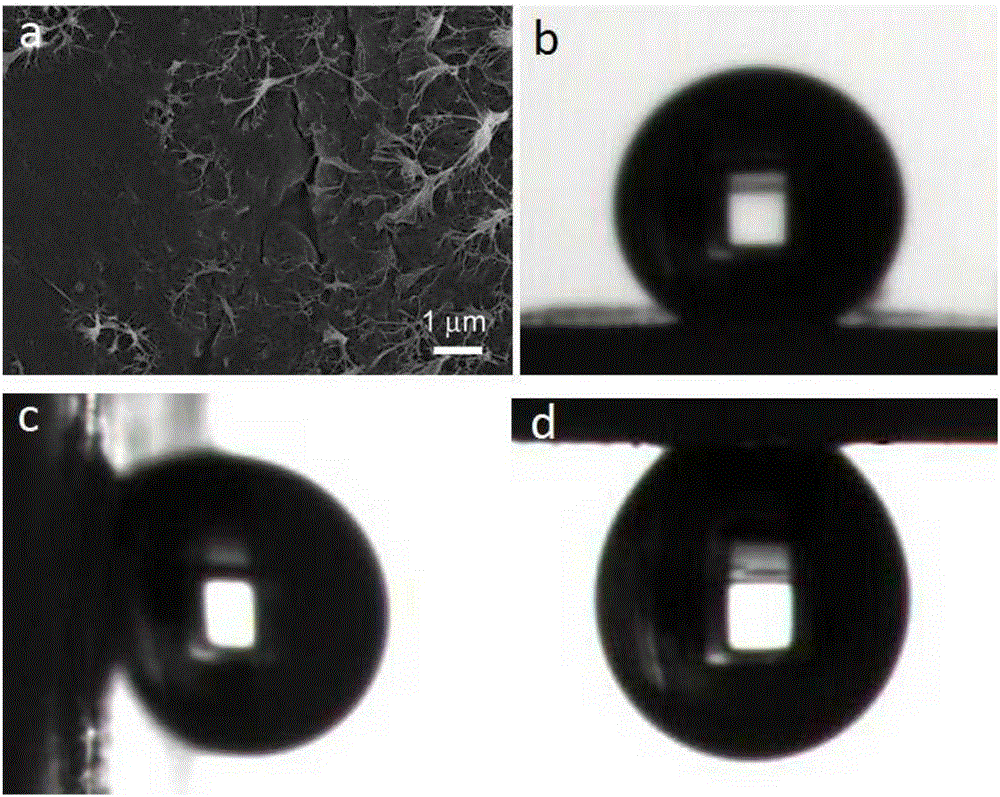Preparation method of polypropylene super-hydrophobic surface with rolling angle controllable
A super-hydrophobic surface, polypropylene technology, applied in the field of preparation of polypropylene super-hydrophobic surface, can solve the problems of a large number of organic solvents, difficult shearing and crystallization, cumbersome process, etc. simple effect
- Summary
- Abstract
- Description
- Claims
- Application Information
AI Technical Summary
Problems solved by technology
Method used
Image
Examples
Embodiment 1
[0018] In this example, 15g of polypropylene pellets were put into a mold of 85*115*1.5mm, and the mold was preheated at 185°C for 10 minutes with a flat vulcanizer, kept at a pressure of 5 MPa for 5 minutes, and cooled to room temperature. The polypropylene sheet is obtained, and then the two polypropylene sheets obtained are stacked together in a mold of 85*115*3mm and placed in a flat vulcanizing machine, preheated at 163°C for 4 minutes, and held at a pressure of 1MPa for 3 minutes. After cooling to room temperature, the laminated polypropylene sheet was peeled off with a universal testing machine to obtain a low-adhesion polypropylene superhydrophobic sheet. figure 1 It is a photo of water droplets on a polypropylene superhydrophobic surface, a test photo of a contact angle (159°), a video screenshot of water droplets rolling on an inclined polypropylene superhydrophobic surface (rolling angle <5°) and a scanning electron microscope photo of polypropylene.
Embodiment 2
[0020] In this example, put 5g of polypropylene pellets into a mold of 85*115*0.5mm, preheat the mold for 10min at 180°C with a flat vulcanizer, hold the pressure for 5min at a holding pressure of 5MPa, and cool to room temperature. The polypropylene film is obtained, and then the two polypropylene films obtained are stacked together in a mold of 85*115*1mm and placed in a flat vulcanizing machine, preheated at 155°C for 10 minutes, and held at a pressure of 5MPa for 1 minute. After cooling to room temperature, the laminated polypropylene film and polypropylene film were peeled off with iron pliers to obtain a highly adhesive polypropylene superhydrophobic film. figure 2 It is a scanning electron microscope photo of a superhydrophobic surface of highly adhesive polypropylene and a photo of a water droplet on the surface facing up (contact angle 154°), 90° vertical, and an inverted polypropylene surface.
Embodiment 3
[0022] In this example, put 10g of polypropylene pellets into a mold of 85*115*1mm, preheat the mold for 5 minutes at 190°C with a flat vulcanizer, hold the pressure for 3 minutes under the condition of a holding pressure of 10MPa, and cool to room temperature. The polypropylene sheet is obtained, and then the two polypropylene sheets obtained are stacked together in a mold of 85*115*2mm and placed in a flat vulcanizing machine, preheated at 160°C for 3 minutes, and held at a pressure of 2MPa for 2 minutes , quickly transfer the stacked sheets to the curved surface concave mold and make it fit the curved surface mold. After cooling down to room temperature, use iron tongs to peel off the stacked polypropylene sheets to obtain Low-adhesion polypropylene superhydrophobic curved concave container, image 3 A photograph of a polypropylene curved container and its contents of a blue aqueous solution of copper sulphate.
PUM
| Property | Measurement | Unit |
|---|---|---|
| diameter | aaaaa | aaaaa |
| height | aaaaa | aaaaa |
Abstract
Description
Claims
Application Information
 Login to View More
Login to View More - R&D
- Intellectual Property
- Life Sciences
- Materials
- Tech Scout
- Unparalleled Data Quality
- Higher Quality Content
- 60% Fewer Hallucinations
Browse by: Latest US Patents, China's latest patents, Technical Efficacy Thesaurus, Application Domain, Technology Topic, Popular Technical Reports.
© 2025 PatSnap. All rights reserved.Legal|Privacy policy|Modern Slavery Act Transparency Statement|Sitemap|About US| Contact US: help@patsnap.com



